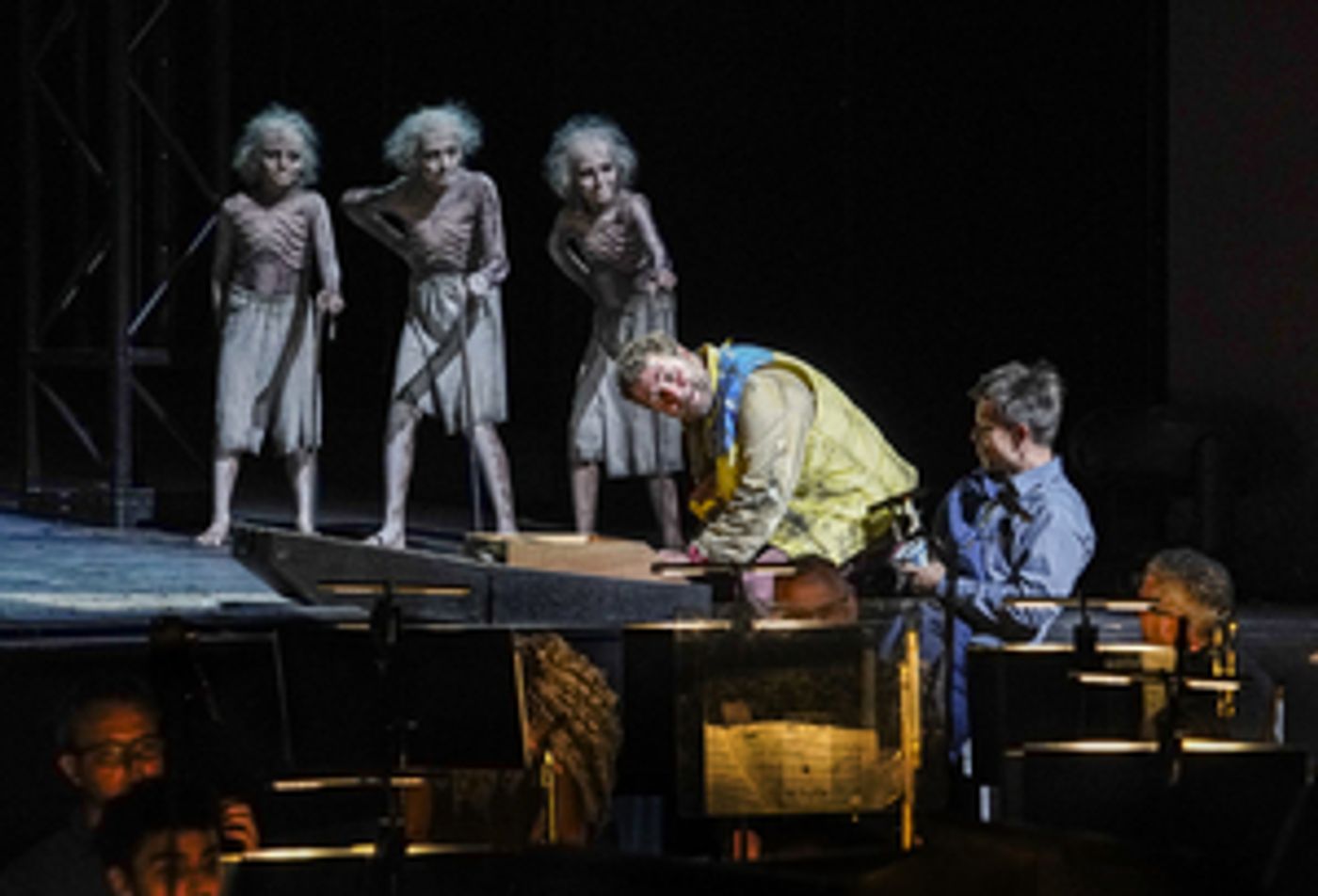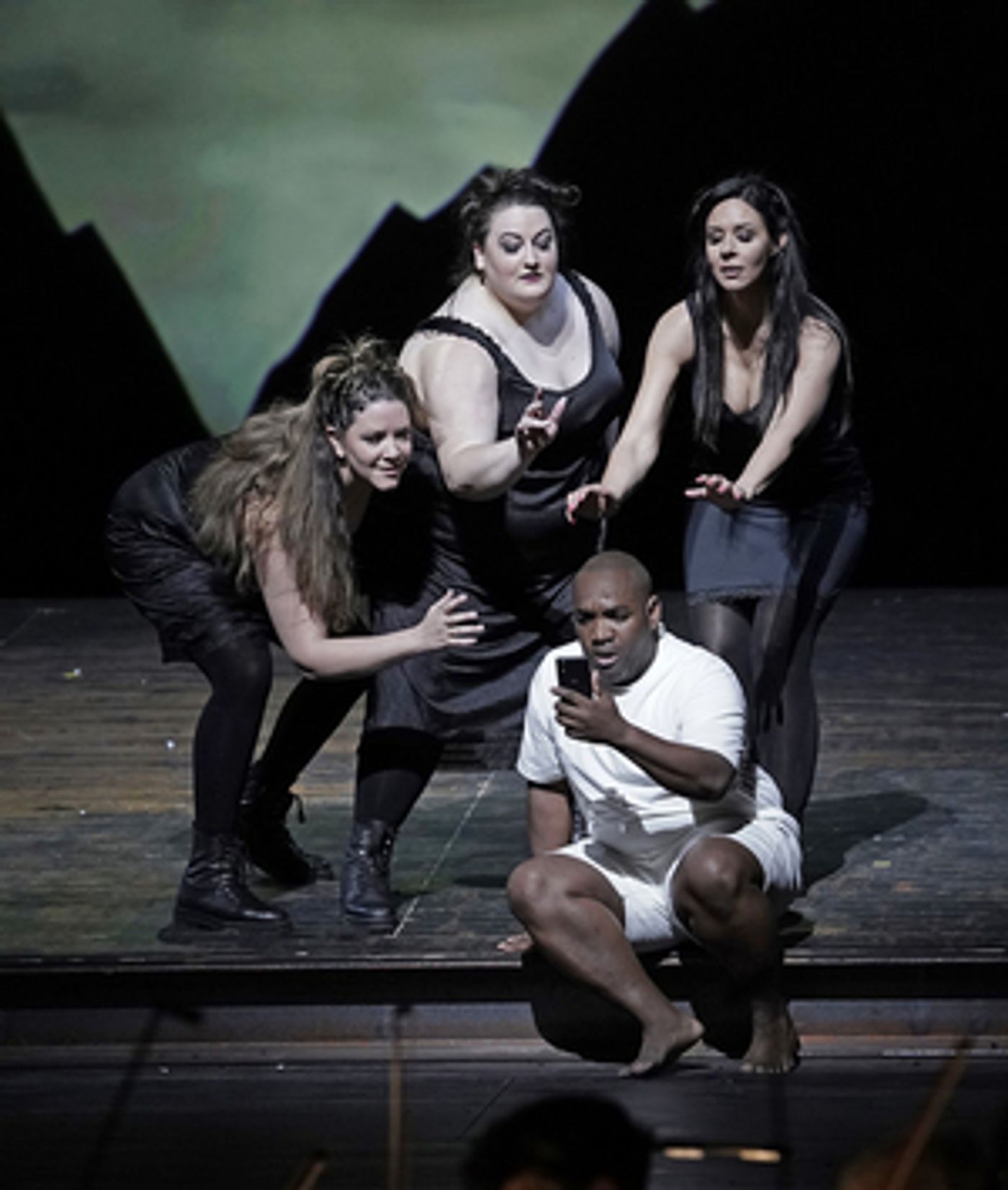Review: Love It or Hate It, the Met's New MAGIC FLUTE Is a Creative Roller Coaster Ride
Simon McBurney’s Production with Singers Oliemans, Brownlee, Morley, Lewek, Thriving Under Conductor Stutzmann

Of all the theatre directors that the Met has marshalled into its forces, Simon McBurney--who brought his version of Mozart's DIE ZAUBERFLOTE (THE MAGIC FLUTE) to the Met on Friday in his house debut--may be the most successful in melding music and theatre, storytelling and visual elements.
This is extremely useful in a singspiel, filled with spoken dialogue written by Mozart's collaborator, Emanuel Schikaneder. You might call McBurney's style "the anti-Zeffirelli," because in his hands, less is definitely more in staging an opera like FLUTE.

While his take on it is new to the Met, it's been around for more than a decade, first in Amsterdam then at the English National Opera and at the Aix-en-Provence Festival, giving McBurney the chance to hone it to his own thinking.
But be warned: "I wanted to strip away the confectionary," the director said in an interview on the Met's website, "and reveal some of the ingredients that make it up."
"Strip away the confectionary" he certainly has done. There is a mini-company of actors who turn sheets of paper into a flock of birds, for example. On a larger scale, there is little in the way of conventional scenery or the use of colors (except for Papageno/Papagena) in this FLUTE.

In fact, some of the scenic design is brilliantly created on the spot through the work of visual artist Blake Habermann, working next to projections by Nicky Gillibrand and sets by Michael Levine.
Habermann sat in a kind of studio at the side of the stage drawing as fast as he can, so it could be projected instantly onto the stage. (At the other side of the proscenium was foley artist Ruth Sullivan, dealing with some of the sound elements, working alongside sound designer Gareth Fry.)

Wagorn. Photo: Karen Almond/The Met
According to the director's synopsis (which deviates from the typical one), "the opera takes place in a mythical, fairytale country as magical and transformative as the stage itself. A conflict is going on.... Two factions are at war. The story is about how to resolve the conflicts and what divides them."
In other words, it could be taking place now--particularly when the costumes of the men in Sarastro's temple are gray business suits--and most of the costumes are street clothes (except when Prince Tamino, tenor Lawrence Brownlee, is in his underwear).

Some of all his ideas for creating a magical environment work spectacularly well--e.g., when the Three Ladies of the Queen of the Night (the death-defying Kathryn Lewek) save Tamino from a giant snake--and some of it left me scratching my head. For example, why is the Queen, usually a glamorous figure now an old lady and the Three Spirits, usually boy sopranos, now old men yet still with ethereal voices? And why are the followers of Sarastro looking like they're at a board meeting--or at the UN?
This was the composer's final opera, dating from 1791, and McBurney feels he was "at the height of his powers." It certainly seemed that way in the hands of the Met orchestra under Nathalie Stutzmann and the chorus under Donald Palumbo, along with a fine cast. And how wonderful it was to have the orchestra visible in this take, because they are stars in their own right!

Where do we start in applauding the singers? It's hard to beat the opera's show-stopping roles--the Queen of the Night and Papageno. The Queen, with Lewek in a role she's sung dozens of times at the Met, has two of the opera's most famous arias, "O zittre nicht" and "Der hölle rache." But she's somewhat ceded to second place, because of the way the director has chosen to portray her, as going through her own difficulties rather than simply manipulating Tamino; her singing on opening night was spectacular save for a couple of the high Fs this role is famous (or infamous) for.

Making his Met debut, baritone Thomas Oliemans was just plain wonderful as Papageno, from his entrance with the delightful "Der Vogelfänger bin ich ja" ("The bird catcher--that's me") till his discovery of his soul-mate, Papagena (the delightful soprano Ashley Emerson a fine match for him). He has been given some marvelous stage business with his musical alter-ego, glockenspiel soloist Bryan Wagorn, that both men bring off perfectly.
While she's been around the Met for a long time, doing admirable work with her gorgeous, sparkling voice, I think that the house has underappreciated soprano Erin Morley until this year. She was in fine fettle as Pamina, giving her some backbone as she had done with Sophie in DER ROSENKAVALIER earlier in the season. I heard her as Morgana in Handel's ALCINA in February, at Barcelona's Liceu, and she's an asset to cherish.

As Tamino, who has to go through more labors than Hercules to prove his worth to Sarastro (and Pamina), tenor Lawrence Brownlee showed off his soaring voice that never ceases to amaze with its beauty and depth. McBurney has chosen to showcase the darker side of the opera and the conflicts within the characters more than the usual FLUTE, though the Three Ladies (the lighter side of the Queen) get to show off in their interactions with Brownlee.
I think he suffers a bit, though, being held back from the more outwardly romantic parts of the role, but it's hard to hide the glories of his voice, in arias like "Dies Bildnis ist bezaubernd schön," when he instantly falls in love with Pamina's portrait. He also did wonderful work in conjunction with the terrific flute soloist Seth Morris, who was more visible than usual in this production
In fact, I thought McBurney's direction held back a couple of the other main players: tenor Brenton Ryan as Monostatos, the lieutenant in charge of Sarastro's henchmen, who didn't have the opportunity to play some of the role's more comic aspects (actually, quite the opposite) and bass Stephen Milling as Sarastro himself, though vocally doing a fine job with his two big arias, "O Isis und Osiris" and "In diesen heil'gen Hallen," which are deceptively difficult to bring off.
Despite having seen more ZAUBERFLOTEs than I can remember, I've never seen one like this and it's wonderful to hear and see something different or, as Monty Python might have said, "...something completely different."
The Met's new FLUTE will be performed through June 10, including the Saturday matinee on June 3 at 12:55pm, which will be shown worldwide on the Met's LIVE in HD series. For more information, please see the Met's website.
Reader Reviews
Videos

